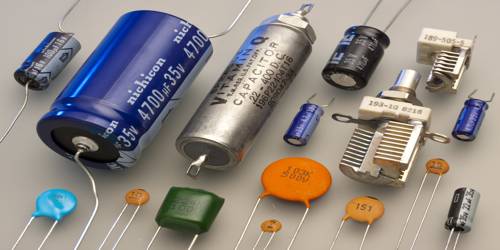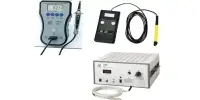Factors associated with capacitor choice
Electronic capacitors are one of the most widely used forms of electronics components. A capacitor is a device that stores energy in an electric field, by accumulating an internal imbalance of electric charge. It is made of two conductors separated by a dielectric (insulator). However, there are many different types of the capacitor including electrolytic, ceramic, tantalum, plastic, silver mica, and many more. Each capacitor type has its own advantages and disadvantages can be used in different applications. Most capacitors contain at least two electrical conductors often in the form of metallic plates or surfaces separated by a dielectric medium.
When choosing a particular type of capacitor, there are many factors that determine the best choice. Some of the major capacitor parameters are detailed below:
Value range available: Certain capacitors are available in certain ranges and this often limits the capacitor choice. Determining the ranges available may guide some initial decisions on the choice for a given capacitor application.
Working voltage: Another major factor determining the capacitor choice and application is the working voltage. Some capacitors, such as tantalum ones, tend to be available in lower voltages, whereas others like ceramic capacitors have a much wide operating range. Looking at the working voltage needed may have an impact on the capacitor usage and choice.
Polarization: Capacitors like electrolytic and tantalum capacitors are polarised and can only operate with a voltage in one direction across them. This may impact the choice of the capacitor is voltages in either direction are needed for the particular use in mind.
Tolerance: For some coupling and decoupling applications the exact value of the capacitor is not critical. However, in some circuits and applications such as filters and oscillators, the value of the capacitor may be critical. For these applications, close tolerance capacitors may need to be chosen.
Temperature coefficient: Some capacitors vary considerably with temperature. Some, like silver mica or some forms of ceramic, are very little with temperature and are therefore suitable for applications in oscillators and filters.
Leakage current: In some applications, there is a need for a high level of insulation across the capacitor. For other applications, this may not be so important. Electrolytic capacitors have poor leakage performance levels and this should be included in any decisions made.
Cost: In many capacitor applications cost can be a driving issue. Today, even many high-performance capacitors can be obtained for the relatively low cost in surface mount packages. Silver mica, glass and other specialized types with exceedingly high levels of performance can be very costly, but these are not normally required for most applications.
Information Source:
















